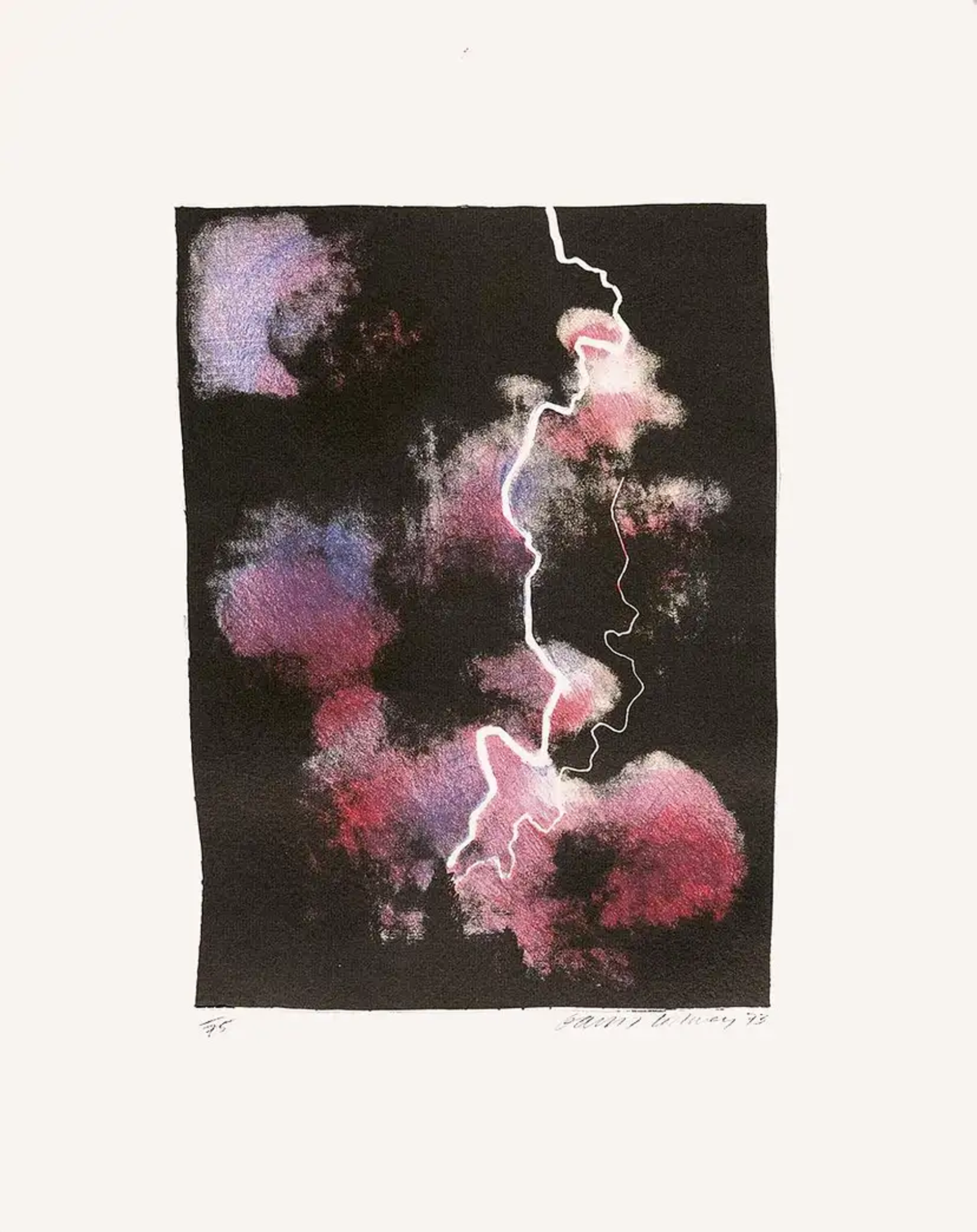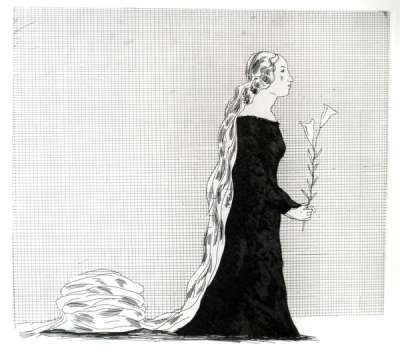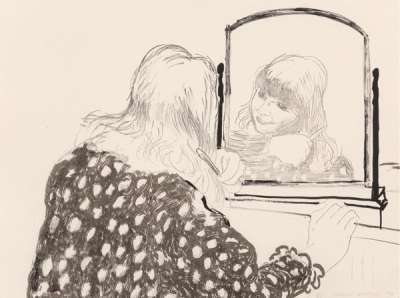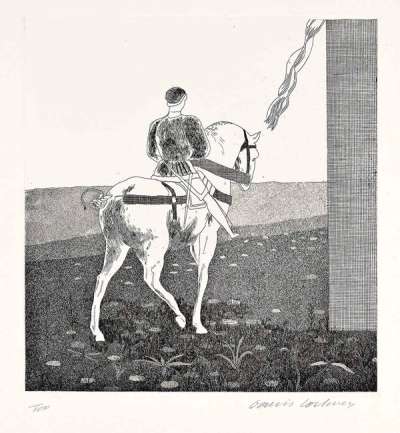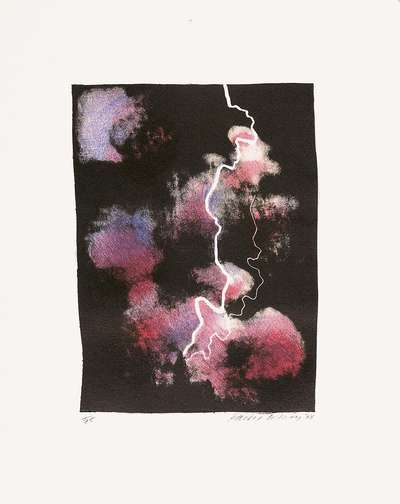David Hockney's Reframing of the Renaissance

 YouTube © BBC / David Hockney experimenting with his theory on Caravaggio
YouTube © BBC / David Hockney experimenting with his theory on Caravaggio
David Hockney
654 works
In 2001, David Hockney shocked artistic purists when he announced his joint thesis with physicist Charles Falco, which suggests that Renaissance masters may have employed optical devices like the camera obscura to achieve their detailed and realistic artworks. This controversial idea challenges traditional perceptions of artistic skill and creativity during the Renaissance, and has generated much debate amongst academics. Using a blend of art history and scientific analysis, the Hockney-Falco thesis reinterprets the techniques and innovations of some of history's greatest artists to propose something groundbreaking.
Understanding the Hockney–Falco Thesis: An Introduction
The Hockney–Falco thesis is a collaborative theory developed by British artist David Hockney and American physicist Charles M. Falco, which presents a provocative perspective on the techniques of Western art masters during the Renaissance era. It posits that renowned artists like Leonardo da Vinci, Caravaggio and Vermeer, may have utilised optical devices such as the camera obscura, camera lucida, and various mirrors and lenses. This use of technology, the thesis argues, aided these artists in achieving extraordinary levels of detail and realistic perspective in their paintings. The underpinning evidence for this thesis comes from detailed analyses of lighting and perspective in Renaissance artworks, where Hockney and Falco identified patterns and anomalies that, they argue, indicate the use of optical aids. This is further supported by historical documentation and the physical properties of these paintings, such as intricate detailing and shifts in style and technique. Their findings were published in the book Secret Knowledge: Rediscovering the Lost Techniques of the Old Masters in 2001.
The implications of these findings are far-reaching, suggesting a fusion of art and technology much earlier than traditionally recognised, and potentially reshaping our understanding of these artists' innate skills and methodologies. However, the Hockney–Falco thesis is not without controversy. It has sparked intense debate within the art historical community, with some scholars and artists aligning with the thesis while others contest its claims, arguing either for the lack of sufficient evidence or the capability of the artists' skills alone to produce such results. This debate extends beyond the specifics of the thesis, stirring broader discussions about the interplay between technology and art, the nature of artistic talent and the methodologies of art historical research.
 Family Portrait (detail) © Lorenzo Lotto 1523
Family Portrait (detail) © Lorenzo Lotto 1523Historical Evidence of Optical Aids in Art
The Hockney-Falco thesis is supported by a multifaceted array of historical evidence. Documentary evidence, such as Renaissance treatises on painting that discuss optics and perspective, provides indirect but suggestive clues of these practices. Moreover, a detailed analysis of certain artworks reveals technical anomalies indicative of optical aids, such as "photographic" distortion, which aligns with the projected images from devices like the camera obscura. Some artists of the era, including da Vinci, also made direct references to using mirrors and lenses in their writings, albeit more in a theoretical context. The dramatic shift towards increased realism and perspective in art that characterises the early Renaissance also serves as circumstantial evidence. This period's advancements in optical science might have influenced these artistic developments, suggesting a potential correlation: the era was marked by significant progress in optical theory, with scientists like Ibn al-Haytham and Kepler deepening the understanding of light and lenses – knowledge that artists could have feasibly applied to their work.
Further compelling evidence comes from the physical examination of paintings themselves. Techniques like infrared reflectography have exposed underdrawings and guide marks consistent with the use of optical devices. Furthermore, artistic experiments conducted by modern researchers and artists – including David Hockney himself – have successfully replicated the styles and techniques of the old masters using similar aids, lending practical support to the thesis. While direct evidence of specific artists using optical aids remains elusive, the convergence of documentary references, anomalies in artworks, physical evidence from paintings, results of artistic experiments, and the historical context of optical science advancements collectively lend credibility to the Hockney-Falco thesis.
David Hockney's Perspective on Renaissance Art Techniques
Hockney became deeply impassioned with the project, coming at it not as an artist historian, but as a painter: “This all started with a hunch,” he says, in an old BBC documentary. His suspicion began with the work of Jean-Dominique Ingres, and wondering whether he had done use of the camera lucida, as some of the lines looked “traced”, rather than sketched on. He sets out to prove this.
Throughout the documentary, he is shown carrying out experiments with much enthusiasm, taking a particular joy in recreating famous paintings and drawings. These include his speculation on how Filippo Brunelleschi might have projected the image of the Baptistery into a dark room, as well as his meticulous arrangement of a scene reminiscent of Caravaggio’s Self-Portrait as Bacchus, which he then emulates. In each of these creative endeavours, Hockney boldly navigates what is considered sacred territory in the art world – the revered legacy of these past masters. He approaches their work with a fresh perspective, undeterred by the notion that these iconic figures are beyond reinterpretation.
His thesis that live projections were used to make many of these classical artworks leads Hockney to radically describe Renaissance art as part of film history, claiming “a single lineage of the moving image which leads from the camera lucida to television and passes right through Renaissance painting.”
 YouTube © BBC / David Hockney experimenting with his theory
YouTube © BBC / David Hockney experimenting with his theoryTechnological Insights: The Role of Mirrors and Lenses
In exploring the technological insights integral to the Hockney-Falco thesis, it is crucial to understand the role of mirrors, lenses, the camera obscura, and the camera lucida in the creation of art, particularly during the Renaissance period.
Both concave and convex mirrors were pivotal tools, according to the thesis. Concave mirrors can project a real image onto a surface, acting like a projector. This could have allowed artists to trace intricate details and complex perspectives with a high degree of accuracy. Convex mirrors, on the other hand, offer a wider field of view, which might have been useful for creating expansive, panoramic compositions. In paintings like Jan van Eyck’s Arnolfini Portrait, the detailed reflection in the convex mirror at the back of the room suggests a deep understanding of how light and reflection work that goes beyond just the naked eye. When used in conjunction with mirrors, lenses can further refine the images projected. By manipulating light, lenses can alter focus, clarity and scale – factors essential for artists striving for extreme realism in their works. This technology might have been especially helpful in rendering details that are difficult to achieve solely by eye, such as subtle gradations of light and shadow.
The camera obscura, essentially a dark room or box with a small hole on one side, projects an inverted image of the outside scene onto a surface inside. Hockney argues this device could have been used by artists to study perspective and composition in a naturally projected image. It is theorised that artists could trace these projections to achieve accurate representations, particularly in complex scenes. The camera lucida, a more portable device comparatively, uses a prism or a small mirror to project the scene in front of the artist down onto the canvas or paper. This would allow artists to directly view and trace their subjects with remarkable accuracy. While it came into more common use in the 19th century, its principles may have been understood and applied in some form earlier.
The Hockney-Falco thesis posits that these technological aids were not mere crutches but valuable tools that enhanced the artists’ ability to capture the world around them with a new level of realism. This perspective shifts our understanding of Renaissance art, highlighting a symbiosis between artistic genius and technological innovation. Rather than diminishing the artists' skills, the use of these tools underscores their ingenuity in adopting the cutting-edge technology of their time to push the boundaries of visual representation.
 Arnolfini Portrait © Jan van Eyck 1434
Arnolfini Portrait © Jan van Eyck 1434Case Studies: Renaissance Artworks Under Scrutiny
Hockney and Falco provide many case studies of Renaissance artworks that are under scrutiny for the potential use of optical aids, particularly focusing on the works of Jan van Eyck, Lorenzo Lotto and Caravaggio. The most famous and obvious of this is the aforementioned Arnolfini Portrait, in which Hockney draws attention to the intricately detailed chandelier, suggesting that such precision in rendering could have been aided by the use of a concave mirror. This type of mirror would allow for the meticulous capture of complex details and reflections; furthermore, a convex mirror is depicted in the background, illustrating van Eyck’s awareness of such devices. Similarly, in Van Eyck's portrait of Cardinal Albergati, the rendering of the ear is noted for its striking realism and depth, again hinting at the possible use of optical aids to achieve such detailed and accurate representation.
In the case of Lorenzo Lotto's Family Portrait, the tablecloth depicted in the painting exhibits a detailed, perspectival accuracy that Hockney posits could have been facilitated by the use of a concave mirror. The mirror's properties might have helped Lotto in capturing the intricate patterns and the three-dimensional appearance of the carpet, which was a challenging feat for artists of that time without the assistance of optical tools. Moving onto a later period, Hockney suggests that artists like Caravaggio began incorporating convex mirrors into their artistic process. The use of a convex mirror, which offers a wider field of view, could be instrumental in achieving the dramatic compositions and expansive spatial depictions characteristic of Caravaggio’s work. This shift not only indicates a progression in the use of optical aids but also reflects the evolving artistic styles and preferences of the time.
Criticism and Counterarguments: The Ongoing Debate
The Hockney-Falco thesis has sparked a lively debate within both art history and scientific circles, leading to various criticisms and counter arguments. Critics primarily focus on the lack of concrete historical evidence that artists explicitly used optical devices. They also emphasise the high level of skill and mastery of perspective and realism that Renaissance artists possessed, arguing these abilities diminish the likelihood of reliance on optical aids. Technical questions have also been raised about the practicality of using tools like the camera obscura, especially concerning capturing movement and working in low-light conditions. Alternatives to the optical explanation for certain phenomena observed in Renaissance paintings are often cited, suggesting that these could be the result of the artists’ deep understanding of light and perspective, rather than the use of aids.
In contrast, proponents of the thesis argue that artists are historically known for their experimentation with new tools and techniques, which could have included optical devices as a means to achieve greater realism. They point to the era's advanced understanding of optics to support the possibility that artists had access to and knowledge of these aids. Physical evidence in certain paintings, such as unique qualities of light and perspective, is also cited as indicative of the use of optical tools. Additionally, experiments conducted by modern artists and researchers, including Hockney himself, demonstrate the feasibility of replicating the techniques of old masters with the use of similar optical aids. This ongoing debate highlights the intricate interplay between art, technology, and creativity, and continues to stimulate fresh perspectives and discussions in the field of art history.
The Hockney-Falco thesis not only enriches our understanding of Renaissance art and its techniques but also cements Hockney's reputation as more than a gifted painter. It establishes him as an influential academic, whose interdisciplinary approach bridges the gap between art history and scientific inquiry, reshaping our perception of artistic creation.




